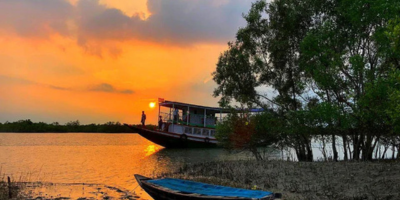Planning a Sundarban trip is like stepping into a living, breathing painting of natural wonder. Located in the delta region of West Bengal, India, the Sundarbans is the largest mangrove forest in the world and a UNESCO World Heritage Site. This rich biodiversity hotspot, famous for its Royal Bengal Tigers and unique flora and fauna, offers an extraordinary travel experience for nature lovers, photographers, and adventure seekers.
The Allure of the Sundarbans
The Sundarbans is a vast network of tidal waterways, mudflats, and small islands, stretching across the southern part of Bangladesh and the eastern part of India. Its name comes from the “Sundari” trees that thrive in the saline coastal waters. The area’s breathtaking beauty lies in its dense mangrove forests, intersecting rivers, and the serene silence of untouched nature.
A Sundarban trip introduces travelers to a pristine environment where every turn of the river unveils a new surprise. From the call of rare bird species to the splash of a crocodile diving into the water, the ecosystem here remains largely untouched by modern civilization.
Must-See Attractions on a Sundarban Trip
- Sajnekhali Watchtower – One of the most popular spots for wildlife observation. It offers panoramic views of the forest and is known for sightings of deer, wild boars, and occasionally, the elusive tiger.
- Sudhanyakhali Watchtower – Located deep within the reserve, this tower is considered one of the best places to spot a Royal Bengal Tiger.
- Dobanki Canopy Walk – This elevated walkway lets you walk through the mangrove forest at treetop level. The Dobanki Watchtower provides another chance to witness wildlife in their natural setting.
- Bonobibi Bharani – Visit the shrine dedicated to Bonobibi, the forest goddess believed to protect the locals from tigers and other dangers.
- Netidhopani – Known for its mystical ruins and scenic beauty, Netidhopani also has a watchtower that offers excellent views of the surrounding forest.
Wildlife Encounters and Adventures
The Sundarbans are home to more than 400 species of wildlife, including saltwater crocodiles, river dolphins, spotted deer, and the endangered fishing cat. The highlight for most visitors, of course, is the Royal Bengal Tiger. These tigers are known for their swimming ability, often seen wading through the creeks and rivers that dissect the land.
Birdwatchers are also in for a treat, with species like the kingfisher, heron, egret, and Brahminy kite filling the skies. The best way to explore the region is by boat, as it allows travelers to navigate through the narrow creeks and channels of the forest.
Best Time to Plan a Sundarban Trip
The ideal time to visit the Sundarbans is between November and March, when the weather is cool and comfortable. This is also the best period for wildlife spotting as animals tend to come out more frequently. Avoid the monsoon season, as heavy rains can make travel risky and many areas become inaccessible.
Travel Tips for a Safe and Enjoyable Visit
- Carry mosquito repellent and wear full-sleeve clothing to protect against insects.
- Always travel with authorized guides and operators for safety and enhanced experience.
- Respect the natural habitat – do not litter or disturb the wildlife.
- Carry essential medicines and a first aid kit, as medical facilities are limited in remote areas.
Eco-Tourism and Conservation Efforts
Sundarbans tourism is carefully managed to balance ecological conservation and community development. By choosing local guides and eco-friendly tour operators, tourists can contribute to the preservation of this incredible biosphere. Many tour packages also include visits to local villages, where travelers can witness traditional lifestyles and crafts.




